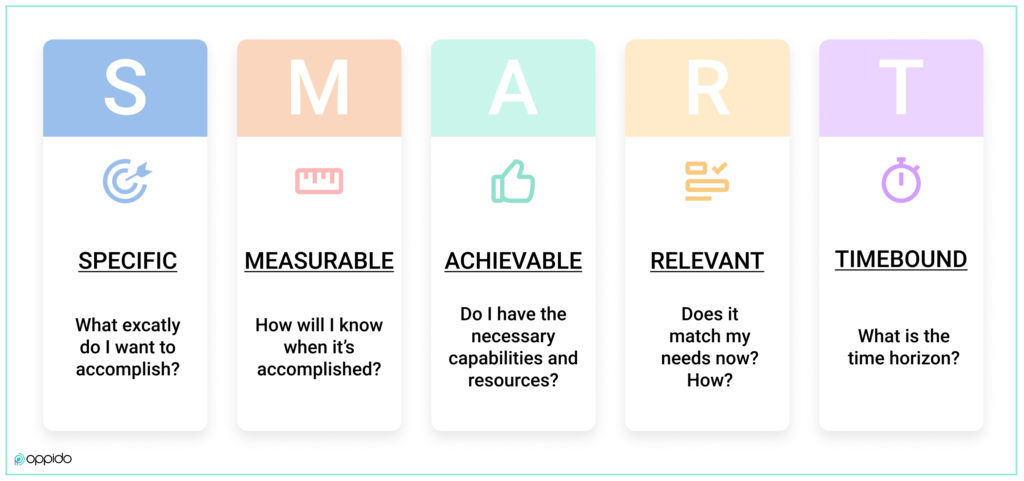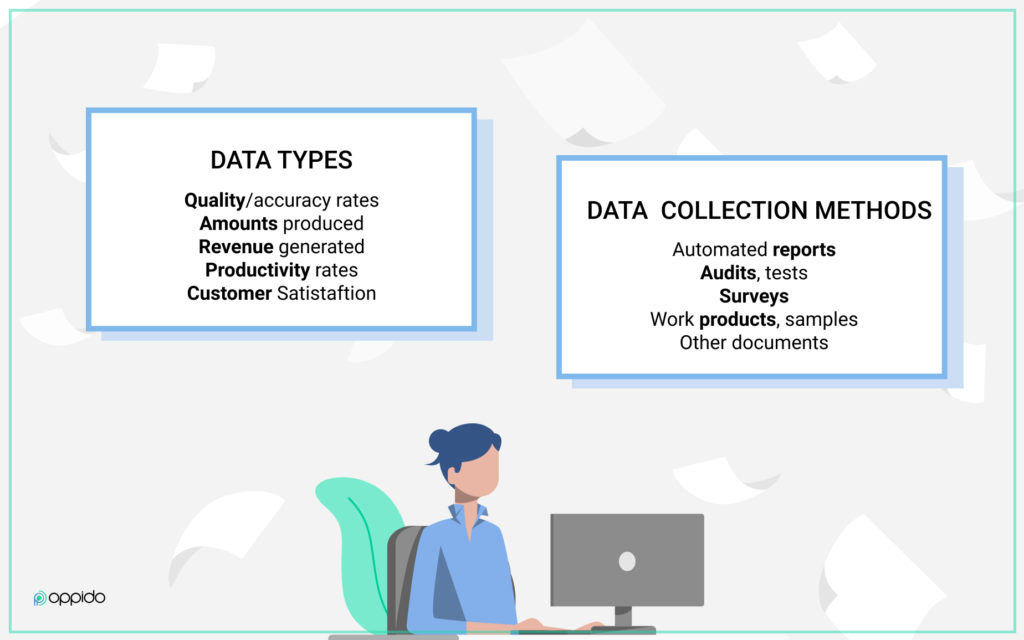It’s said there is beauty in simplicity. But getting there might, in reality, be complex sometimes.
Setting goals might be simple but attaining them is more tangled. It’s not just a work-life question, where you must plan and follow your never-ending list of tasks, short- and long-term schedule.
Whether we talk about our life milestones’ bucket lists or business turning points, the pathway to achieving our goals can be structured and clear, even if exhausted. We only need to have a strong foundation, so we are more than ready to take the next step.
I Know What My Goals Are. Isn’t It Enough?
Well, setting your goals is the first step. Or better said, first crawling. The important thing is, you need to be precise, time accurate, and realistic in setting your daily intentions first. You need to outline your strategy for reaching objectives to know precisely how much time and other resources you need to apply to success. And for that, you need to be genuinely SMART. 🙂

The SMART Criteria
The SMART acronym firstly appeared in 1981 in the issue of Management Review by George T. Doran. Since then, there have been many interpretations of the exact acronym meaning. Some authors have even expanded the SMART acronym to SMARTER, reflecting the missing criteria of Evaluation and Revision.
However, the SMART acronym represents five essential parameters:
- Specific
- Measurable
- Achievable
- Relevant
- Time-bound.
First and foremost, the SMART criteria should help you stay focused, motivated, and on track, whatever the acronym stands for. Depending on the responsibilities to which you’re addressing, the acronym SMART is often adjusted to:
- Simple, Sensible, Significant
- Meaningful, Motivating
- Agreed, Attainable
- Reasonable, Realistic, Resourced, Results-based
- Time-based, Time-limited, Time/cost limited, Timely, Time-sensitive.
One of the most common mistakes when setting your goals is having unrealistic expectations based on vague, poorly-framed, and general goals. For instance, “I want to lose weight.” or “We want to boost our performance.” Such goals don’t establish any clearly defined directions towards achieving them and are rather discouraging.
So, let’s have a look at how to write SMART goals step by step.
Specific Goals to Stay Focused
Firstly, you need to narrow down your goal as much as possible to understand the necessary steps you need to take properly and better visualize the desired outcome. The original SMART framework refers to specific goals as the mission statement. The familiar “W” question might come in handy in this phase:
- What? → What exactly do I want to achieve? What is the priority of this specific goal?
- Who? → Who is involved in the process? Who is assigned to each task? (This question is essential when working on a group project.)
- Where? → Is the location or department relevant in the process? If so, identify it.
- When? → What is the time frame? You don’t have to be too detailed since you will identify the individual “time-bound” section at the end.
- Why? → What lies behind your decisions? What is the reason for this particular goal?
Example:
Increase blog website traffic by developing a link-building strategy and optimizing SEO keywords to improve our authority and search engine rankings.
Measurable Goals to Track Progress Effectively
Quantify your goals, set milestones, and choose relevant metrics to measure your progress. Each objective must have predetermined criteria for tracking progress. Trackable benchmarks allow you to re-evaluate and adjust anytime if needed.
When considering various measurements, you can address the following questions:
- How will I know when I accomplished the goal?
- What might success resemble?
- How much? How many?
- What will indicate that I’m reaching my goals?
- Will I need any specific data sources/collections to measure my progress?
- What measurement methods are most relevant to track my progress?
Example:
Increase the number of sessions by 1000 by developing a link-building strategy and optimizing SEO keywords to get more visitors. The goal is 40 backlinks to our blog homepage.

Achievable Goals to Stay Motivated and Challenged
Always consider your abilities and resources. Setting attainable goals help you define what exact steps you can take now and what preliminary steps you need to take to prepare for the future. You’re more likely to reach the final line with attainable goals since you know the requirements and what new skills or experience you still need to gain. Growth is addictive and forces us to have higher and higher expectations. With achievable goals, you can find the balance between “impossible to achieve” and “too easy to achieve”.
Questions to consider:
- What are the requirements I need to meet?
- Do I have the necessary capabilities to achieve this goal?
- What steps do I need to take to gain additional knowledge?
- Did I accomplish a similar goal before? Has anyone else reached this goal before?
Example:
Today, there are about 300 low-quality links directing to our blog website. We currently generate 15 new inbound links per month. To get 30 additional links from a link-building campaign is a realistic target. However, we need to close ongoing deals with two prominent business partners first.
Relevant Goals to Get the Big Picture
Your goals always must make sense in the broader context. Each goal should align with your personal or business values, long-term objectives, priorities, and skillsets. It’s important to ask yourself why this particular goal is important and how its accomplishment contributes toward broader objectives. Sometimes one goal is not relevant today, but it might become relevant in the next six months. Thus, constantly re-think and reflect reality.
Questions to consider:
- How realistic is the goal, based on the capabilities, time and resources constraints?
- Am I or everyone involved able to commit to achieving the goal?
- Is this the right time?
- Does it match my/our needs? How?
Example:
Backlinks are one of the most significant ranking determinants on search engines. Because most of our web traffic is organic, high-quality partnerships and authorised backlinks will boost our traffic, brand awareness and generate more leads as a result.
Time-bound Goals to Have Priorities
Setting time-based goals prevent you from never-ending lists of objectives with high priority only. Instead, your goals must be time-constrained, so you know exactly how much time you’ve already spent and what was completed so far. The sense of urgency leads to higher motivation. Moreover, deadlines also help with better coordination between people working on dependent tasks when working in a group.
Questions to consider:
- What is the time horizon?
- What must be accomplished halfway through the process?
- What is the target date for deliverables?
- What is the final deadline?
- What can I do now/in a week/in a month?
- What happens when I won’t manage it in time?
Example:
Deadline: Three months from now.
No matter how small or big your goals are, they always have four things in common: clarity, focus, motivation, and determination. SMART goals set you up for success by creating structured frameworks to help you work effectively and purposefully.
Further reading:
